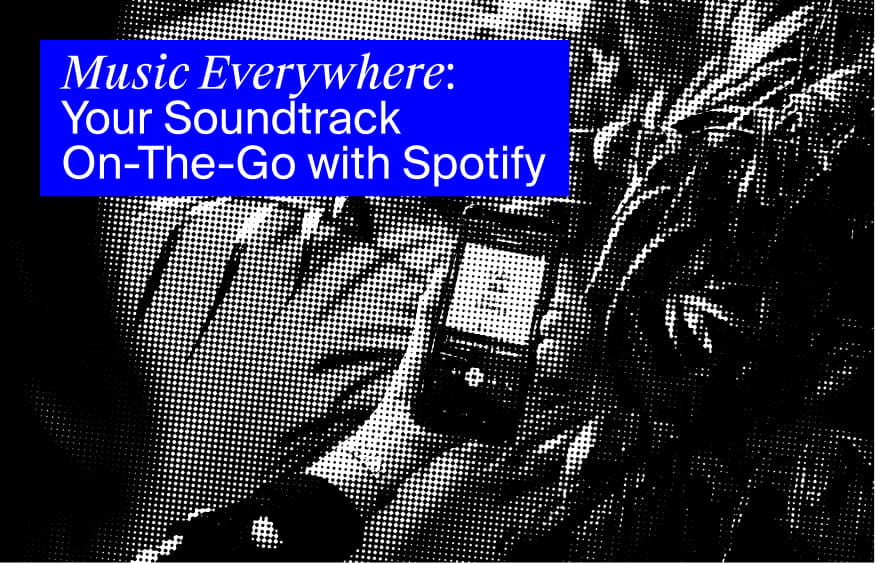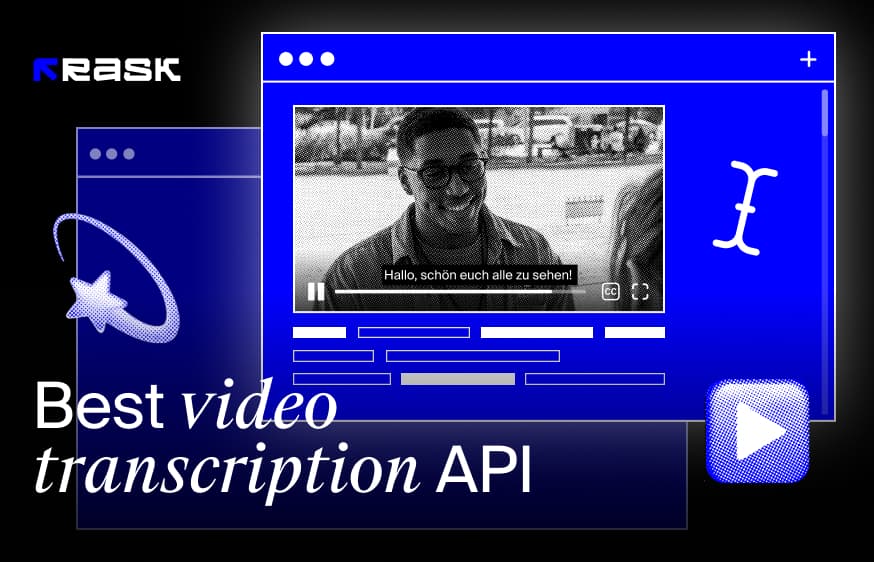The Art of Audio Advertising: Best Practices for Crafting Successful Spotify Ads
A piece of art, Spotify's audio ads. In this post, we'll provide you some advice and best practices for Spotify advertising. Learn how to produce audio for your commercials that will capture the listeners' attention and maximize their impact.
The Benefits of Advertising on Spotify
Whether you're, on a jog, caught in traffic or preparing a meal Spotify continues to dominate the world of content in 2023. With a staggering 350 to 500 million Spotify users worldwide investing hours each month on the platform it has become essential for marketers, brands, businesses and creators to tap into this audience. Approximately half of Spotifys user base is subscribed to Spotify Premium, which ensures listening without any ads. Isn't that impressive? Up to 250 million active users are still available for audio advertising, though. Instead of asking whether you should advertise on Spotify, ask yourself how to do it. You have the option to advertise on Spotify, where users can click on your ads.

Understanding How Spotify Ads Work
Provides display advertising and audio spots, for promoting your company and directing customers to a URL of your choice. However creating an ad that resonates with the Spotify audience can be challenging. You need to be mindful that these users value their audio content and may find your audio ads intrusive. Nevertheless this presents an opportunity to reach people when they are open to receiving messages and to distribute relevant professionally crafted and engaging Spotify advertisements.

On the side if you make mistakes in your advertising approach you risk losing a potential customer and damaging your brand reputation. That's why it's crucial to have an well planned strategy, in place — thats where we can assist you.
Recording High Quality Audio Ads for Spotify
To create your Spotify ads you can utilize Spotify Ad Studio. This platform provides you with a range of production tools offered by Spotify, including background tracks, voice actors and professional audio mixing.

Here are some recommended guidelines to keep in mind while designing your ad:
- Keep It Casual Your script should be short and conversational, around 55–70 words. Try to tell a story that illustrates a clear problem and solution for your audience.
- Don’t Overcomplicate Your Message Focus on the key action or thought you want to leave your audience with, and run with it. Start with an attention-grabbing hook, introduce your brand and purpose, and end with a call-to-action (CTA). Done.
- Tell Your Story with Sound Add background music and relevant sound effects, either with Spotify Ad Studio’s tools or on your own, but don’t overdo it — you don’t want to distract your audience from the core message of your Spotify audio ads.
Leveraging AI generated Audio in Your Spotify Ads
You may either offer Spotify with a script and let them record and mix your ad for you, or you can create and upload your own advertisement audio. If you’d like to use Spotify’s audio creative tools, you need to add a script, language and voice profile of the voice actor you’d like, then pick your background music of choice from their catalog (or add your own). as well as instructions for the voice actor, after which the voiceover should be recorded within 48 hours, and you’ll review it and give feedback from Spotify Ad Studio. Instead of relying on Spotify’s voiceover and audio tools, which may delay your process and will require one or more round of feedback to get the result that you want, why not try Text-To-Voice (TTS) AI solutions that can realistically mimic human voice in a fraction of the time and cost. AI Voice solutions like Rask AI also allow you to translate your voiceover into 130+ languages, so you can expand your audience with ease.

Exploring the Cost of Advertising on Spotify
When building your advertisement audio campaigns, you can set an average daily budget or a lifetime budget. The minimum daily budget you can set is $15 CAD, and the most you’ll spend is 30.4x your average daily budget each calendar month. The minimum lifetime budget you can set is $250 (converted to your local currency). The Spotify Ad Studio runs the audio and video ads for music ads on auction, while the Spotify podcast ads are run separately on fixed prices.

When Spotify Free users are ready to receive an ad, advertisers compete to “win” the impression. In the ad creation process, you can set goals for each of your ad sets, which determine how you’d like to bid for users: ‘Impression delivery’ will reach as provide as many impressions to your audience as possible, ‘Reach’ means your ad will be sent to unique users only, and ‘Clicks’ aims to drive listeners to your URL.
You can also set the maximum price you want to pay per 1000 impressions (this is called a ‘bid cap’). Certain audiences are more popular and therefore more expensive to target, which means that you’ll reach your bid cap sooner. The audio ads Spotify prioritizes are those that have the correct bid cap but also those that are relevant to the audience. So, how much do Spotify ads cost? If your Spotify audio ads perform well, each impression should cost you $0.015–$0.025. This is why it’s important to know your audience really well, so that you can use Spotify’s targeting tools to find them for the lowest price.
Introducing the Spotify Audience Network
It’s important to understand what kind of people use Spotify Free. For example, Spotify reckons that 1 in 3 of the global Spotify audience that use Free are Gen Z — so you should ensure the language, tone and content of your Spotify audio ads is relevant to a younger audience. Thankfully, Spotify offers a variety of targeting options to get your message to people in the Spotify audience network at the right moments and with the right ad formats.

As with other ad platforms, you can target Spotify’s Audience Network based on demographics like age, gender, location, and language. Besides targeting the genres of music that users enjoy, you can also target users’ interests based on the content of the playlists and podcasts they listen to — categories include Books, Commuting, Running, Tech and Parenting. Spotify also offers ‘real-time context’ targeting, which allows you to target users listening to music tailored to specific activities like working out, studying, or gaming, moments like dinner or party, and moods like ‘Chill’, ‘Focus’ or ‘Travel’. There are also additional, custom targeting options available from Spotify’s sales team, if you choose to work with them.
A Comprehensive Overview of Launching Advertisement Audio on Spotify
- Create a Spotify account if you don’t have one already.
- Sign up for Spotify Ad Studio (you can also add more Ad accounts later, if necessary).
- Create a new campaign, with one or more ad sets.
- Decide whether you want to do music or podcast advertising.
- Select your format for your ad set: either audio or video.
- Upload a 30-second or shorter WAV, MP3, or OGG file of 1MB or less for the audio advertisement creative, or create one using Spotify’s tools.
- For video, you can upload an HD MOV or MP4 file of 500MB or less, in 9:16 (vertical) or 16:9 (horizontal). Your video must include sound.
- Add a square JPEG or PNG image of at least 640 x 640 pixels that’s 200KB or smaller for the companion Spotify display ad, or select one of the image options Spotify suggests.
- Select the right call to action for your ad from the options provided.
- Add a URL that users can click through to from your ad.
- Select your promotion type — unless you’re promoting an artist, you’ll choose ‘brand, product, or organization.’
- Set a frequency cap to ensure your audience doesn’t receive your ad too many times in a day, week, or month.
Testing Our Product: Rask AI's First AI generated Audio Ads on Spotify, in Multiple Languages
At the end of May, 2023 Spotify announced that they are looking to develop podcast ads that will be read using an AI version of a human’s voice. The Rask AI team are several steps ahead however as they have already launched an advertising campaign on Spotify itself on 24–31 May, 2023, and by conducting extensive testing achieved valuable data into listeners' behaviour. Here’s some of our insights that will help marketers use our tool smartly.
In Spotify Ads, you can target people based on what language they use in Spotify. That is why we generated sound ads to test our product within the US market but across different languages — specifically targeted English (EN), Spanish (ES), and French (FR) speakers to gauge their response and test our hypothesis.

Rask AI's founder and CEO Maria Chmir says: “To maximize the effectiveness of our campaign, we created separate promotions for podcast listeners and music enthusiasts with specific interests in business and technology. When we created the ads, we wanted to attract those who fit our target demographic, and in particular, English and Spanish-speaking users in the Americas region were very positive about our offer and showed very high levels of engagement and activity. For the Spanish-speaking audience, the ad completion rate is over 97% when you start speaking the same language as your audience.
As we strive to grow and expand our market reach, this useful information will undoubtedly help us further guide our marketing strategy. So, we can see that when you target your audience with ads in their native language, your ad completion rates are quite impressive. Using Spotify Ads makes a lot of sense because it has a great feature for targeting people who speak different languages.
Final Conclusion
When creating audio ads on Spotify that really resonate with your target audience, it's crucial to use accurate language and context with Rask AI. Depending on the audio advertising landscape, you can quickly increase the effectiveness and engagement of your advertising efforts by using artificial intelligence to create ads on the Spotify platform.
FAQ
There are no ads in the paid version of the app. So if you get tired of ads, Spotify is waiting for your subscription to earn money from it.
As a standard, Spotify ads last no more than 30 seconds, and the image that accompanies the ad can be shown throughout the video.
It's clear that there will be ads after every song. It turns out to be a bug.
If your subscription has expired or someone in your family has been removed from the plan, you're seeing ads while listening to streaming music.
Yes, if you have a subscription, you will not see any ads.






.jpg)
.webp)




![8 Best Video Translator App for Content Creators [of 2024]](https://rask.ai/cdn-cgi/image/width=960,format=auto,fit=scale-down/https://cdn.prod.website-files.com/63d41bc99674c403e4a7cef7/6668a3dcd3175bd1d1c73c81_Best%20video%20translator%20apps%20cover.webp)
![Best AI Dubbing Software for Video Localization [of 2024]](https://rask.ai/cdn-cgi/image/width=960,format=auto,fit=scale-down/https://cdn.prod.website-files.com/63d41bc99674c403e4a7cef7/66685014f68137eb05c89c16_Cover.webp)





.webp)